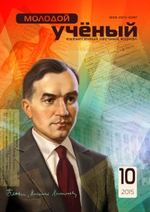Books are the mirrors of the soul
Virginia Woolf
Metaphor is a relation between an implicit, implied or hidden comparison between two things or objects. It compares two different things based on a single or some common characteristics. Metaphors are used in common language and in types of literature, but more often in poetry and songs to draw poetic or comparative links between things.
Metaphor comes from the Greek, metaphora, meaning to carry or to transfer something. It is used to create a mental expression, a judgment and transfers characteristics of a concept to another [1].
Metaphors are classified differently by researchers. There exist several types of metaphor [2]:
1) dead metaphor (it has lost its original force and meaning through overuse and is no longer considered thought-provoking). For example,
- at the bottom of the hill;
- the body of an essay;
- to feel blue;
- to fall in love;
- the light of my life;
- crown of glory, etc.
2) cliché metaphor (a metaphor which has outlived its usefulness). For example,
- Achilles’ heel;
- a transparent lie;
- dark and stormy night;
- explore all avenues;
- a jewel in the crown;
- tall, dark and handsome.
3) mixed metaphor (leaps to a second identification inconsistent with the first one; often regarded as humorous cases of speech). For example,
- beyond the question of a doubt;
- nothing out of the unusual;
- Pause your eyes!
- He’s a pretty sharp cookie;
- Did you hear what they feel?
- What goes around, stays in Vegas, etc.
4) extended metaphor (makes a deeper comparison between the subject and the thing it’s being compared with). For example,
All the world’s a stage,
And all the men and women merely players;
They have their exits and their entrances,
And one man in his time plays many parts (William Shakespeare, As You Like It).
5) stock or standard metaphors (is used in an informal context to convey a situation pragmatically). For example,
- a sunny smile;
- to oil the wheels;
- I can read him like a book, etc.
6) adapted metaphor (is a stock metaphor that has been adapted into a new context by its speaker or writer). For example,
- the ball is a little in their court;
- almost carrying coals to Newcastle.
7) original metaphor (created or quoted by the writer). For example,
- Art washes away from the soul the dust of everyday life (Pablo Picasso);
- Conscience is a man’s compass (Vincent Van Gogh);
- Chaos is a friend of mine (Bob Dylan).
In conclusion, it can be noted that metaphors play an important role in the author’s intention to convey an appropriate atmosphere and show unforgettable images. Therefore, metaphors help the reader to understand the meaning and content of a literary text much more deeply. Metaphors are important in the enrichment of the language. They make it brighter and more diverse. With the help of metaphors, a literary text becomes more emotional, impressive, striking and alive.
References:
1. Abdullah Sh., Shuttleworth M. Metaphors in the translation of English technical texts into Malay: A preliminary study // Journal of Asian Scientific Research, 2013, № 3(6). Pp. 608–629.
2. Oliynyk T. Metaphor translation methods // International Journal of Applied Science and Technology. 2014. Vol. 4, No. 1. Pp. 123–126.







